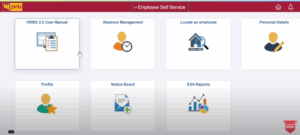Retirement Income Planning for a Longer and Healthier Life

Retirement, a well-deserved reward after a lifetime of hard work, is no longer a brief chapter in our lives but an extended journey that demands careful financial preparation. In an era of increasing life expectancies, we find ourselves blessed with more years to savor the fruits of our labor.
However, to ensure these years of retirement are both enjoyable and financially secure, thoughtful retirement income planning is crucial. In this blog post, we’ll explore the art of crafting an effective retirement income strategy, not simply intended to prolong lifespan but to promote health, happiness, and financial security throughout life.
1. Early Planning for Longevity
The first step in effective retirement income planning is to start early. The sooner you begin to save and invest for your retirement, the more time your investments have to grow. Compound interest can significantly expand your retirement nest egg, providing the financial means necessary for living longer.
As part of your retirement planning strategy, accounts like 401(k)s and IRAs may offer tax advantages while helping investments grow more rapidly. Diversify your investment portfolio to manage risk more efficiently while regularly reviewing and adapting it based on your retirement goals.
2. Downsizing and Home Equity Conversion
One way to supplement your retirement income may be downsizing or exploring home equity conversion options such as reverse mortgages. Moving into a smaller and more affordable residence could free up funds that you could invest or use for living expenses.
On the other hand, by taking out a reverse mortgage loan, homeowners aged 62 or older can access some of their home equity as tax-free funds, making this an attractive solution for supplementing retirement income while remaining in their current home. This type of loan can also help you with healthcare costs, renovations to your home, or any additional expenses that may arise as you grow older. Loan repayment occurs either when selling, moving, or passing away, and the equity left in the home belongs to either themselves or their heirs.
3. Investment Income and Asset Diversification
Investment portfolios play a critical role in retirement income planning. Diversifying among various asset classes helps manage risk while creating income streams to sustain you during retirement.
Income-generating investments such as bonds, dividend stocks, and annuities can provide a steady source of funds to cover your expenses. Proper asset allocation and periodic rebalancing are crucial to make sure your portfolio aligns with both your retirement goals and risk tolerance.
4. Healthcare Costs
In the span of two years, from 2021 to 2023, annual healthcare expenses for a family of four have surged, climbing from $28,310 to $31,065. As we age, healthcare expenses become an important consideration in retirement income planning. Since medical costs can vary and increase as we get older, you must prepare accordingly.
Purchase supplemental health and long-term care insurance plans to safeguard your retirement savings against unexpected medical costs and enjoy a healthier life without fear of healthcare-related financial strain.

5. Part-Time Work or a Second Career
Retirement doesn’t have to mean an end of working life. Many retirees find fulfillment and financial security by working part-time or starting up a second career, such as consulting or freelance work. Earning additional income may extend your savings for retirement as well as keep you engaged with activities you love.
Part-time work offers not only extra income but also purpose and social engagement that may help extend and enrich a person’s lifespan.
6. Estate Planning and Legacy Considerations
As you plan for a longer and healthier retirement life, don’t overlook estate planning and legacy goals. Create an estate plan outlining how assets should be divided between your heirs. This will help you reduce estate taxes while helping ensure wealth transfers as smoothly as possible.
Additionally, consider philanthropic efforts or leaving a legacy through charitable donations or family support. Contributing to causes you care about can bring a sense of fulfillment and purpose to your retirement years.
7. Long-Term Care Planning
Planning for long-term care expenses is an integral component of retirement income planning, with costs associated with nursing homes or in-home care being significant. To protect your savings against being consumed by these expenses, it may be worthwhile looking into long-term care insurance or alternative means for funding this potential need.
Plan early for long-term care needs by setting aside part of your retirement savings or exploring insurance policies to cover unexpected medical bills. Being prepared will give you peace of mind while creating a healthier and more secure retirement experience.
8. Periodic Review and Adjustment
Retirement income planning is not a one-off task. Rather, it requires ongoing review and adjustment as your circumstances, goals, and economic conditions evolve. Stay engaged with your financial advisor as the plan evolves to make necessary adjustments so that it continues to reflect your vision for living a long and healthier life in retirement.
Final Thoughts
Retirement income planning is a multifaceted activity that involves careful consideration of various financial elements. As we live longer and healthier lives, the need to prepare financially for our extended retirement becomes ever more crucial. By starting early and creating a realistic budget, as well as exploring reverse mortgage loans, you can build the basis of a secure retirement future.
Attaining long-term retirement income security means planning now for an enjoyable retirement journey, providing peace of mind as you look ahead.

Pranab Bhandari is an Editor of the Financial Blog “Financebuzz”. Apart from writing informative financial articles for his blog, he is a regular contributor to many national and international publications namely Tweak Your Biz, Growth Rocks ETC.






